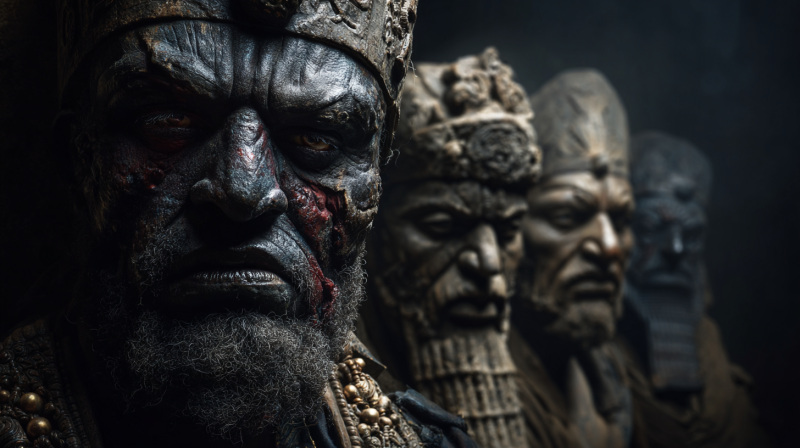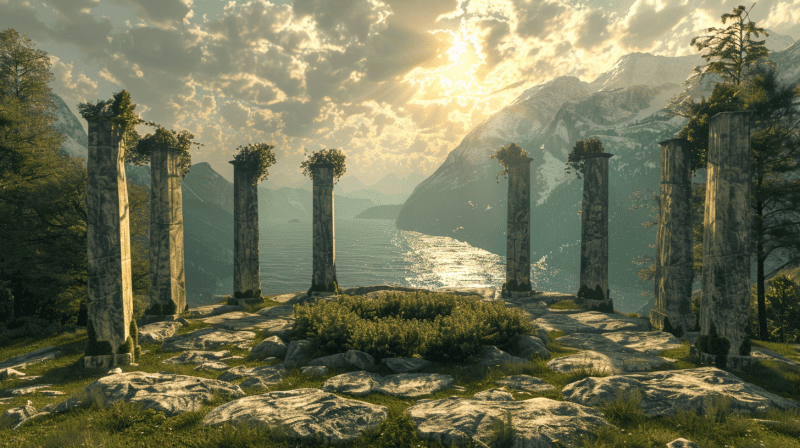Where the Sea Meets the Imagination
Mythical islands created by sailors, sages, and storytellers can be found beneath the roaring waves and beyond the borders of old maps. These lands, often unreachable and cloaked in mist, are not just geographical enigmas but spiritual sanctuaries, kingdoms of lost civilizations, and afterlives wrapped in eternity. They form the backdrop of quests, dreams, and warnings—moral, mystical, or scientific. Some are lush paradises, while others hide secrets best left forgotten.
We’ll chart the waves across time and culture to explore legendary islands such as Avalon, Atlantis, Hy-Brasil, Thule, and the Isles of the Blessed. We’ll uncover their origins, meanings, and the enduring fascination they inspire.
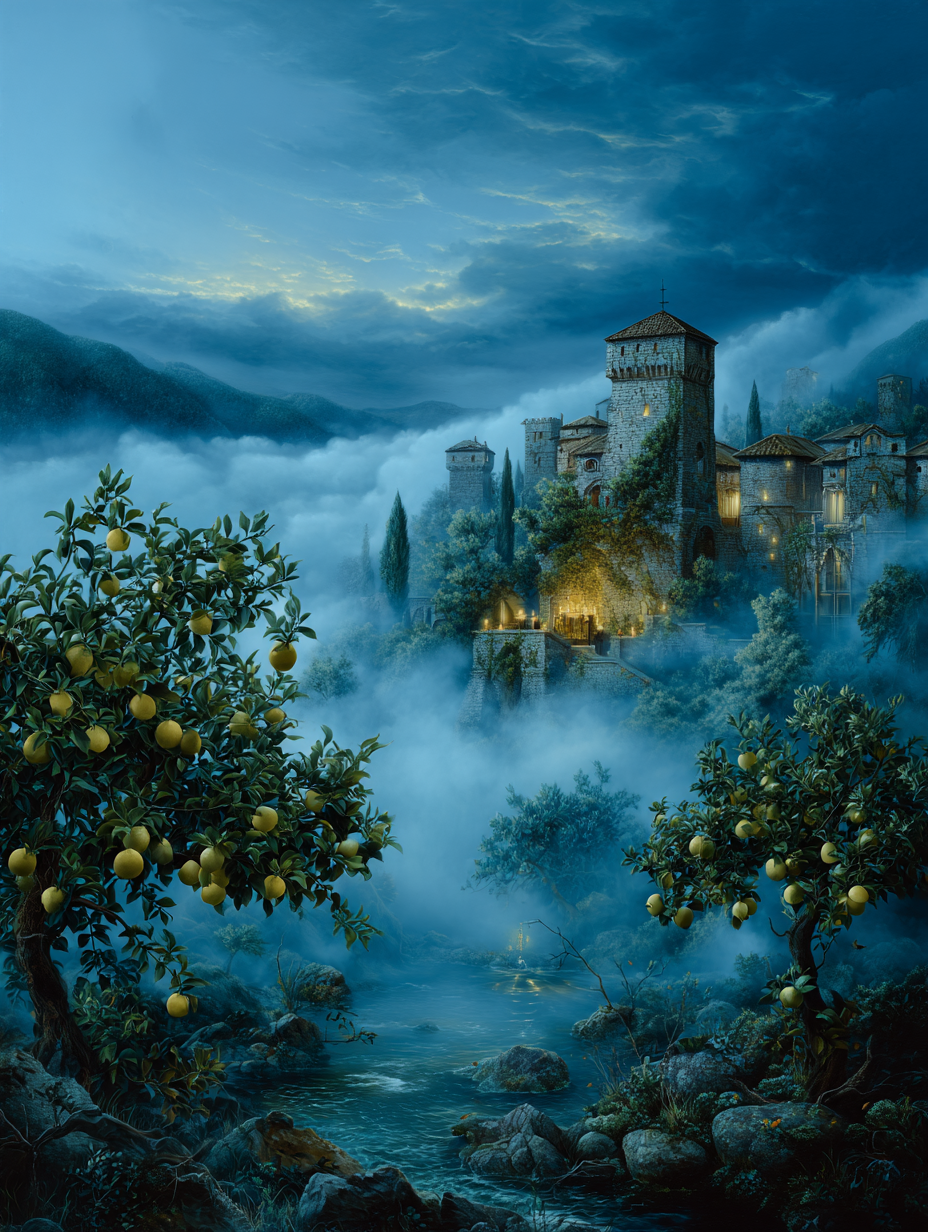
Avalon: The Isle of Apples and Eternal Healing
In Arthurian legend, Avalon shimmers like a dream cloaked in mist. Known as Ynys Afallon in Welsh—“Isle of Apples”—Avalon is where King Arthur was taken after his final battle to be healed of his mortal wounds. Described as a place of peace and magic, ruled by enchantresses like Morgan le Fay, Avalon is neither fully of this world nor wholly removed from it.
A Veiled Sanctuary
Avalon represents more than a place; it’s a spiritual dimension. The idea of being “taken to Avalon” implies a mystical rebirth, an ascension beyond pain or death. For medieval minds, it mirrored paradise or heaven. For modern readers, it still suggests a hidden truth or ideal that remains just out of reach.
“The island lies beyond the ninth wave,” a bard once said. “It can be seen only when the air is clear, and the soul unburdened.”
Atlantis: A Civilization Lost to Hubris
First mentioned by Plato in his dialogues Timaeus and Critias, Atlantis is the archetypal sunken world. A once-great naval power, advanced and wealthy, Atlantis fell out of favor with the gods due to its arrogance. In a single day and night, it sank beneath the ocean.
A Warning in Allegory
To Plato, Atlantis was a parable about the dangers of pride and overreach. However, this philosophical tale soon took on a life of its own. From Renaissance mystics to modern pseudoarchaeologists, people have searched for Atlantis in the Atlantic Ocean, the Mediterranean, the Caribbean, and even Antarctica.
What if it was real? Or perhaps, more terrifyingly—what if it wasn’t a place, but a pattern? A warning etched in myth about all civilizations that grow too big to fail.
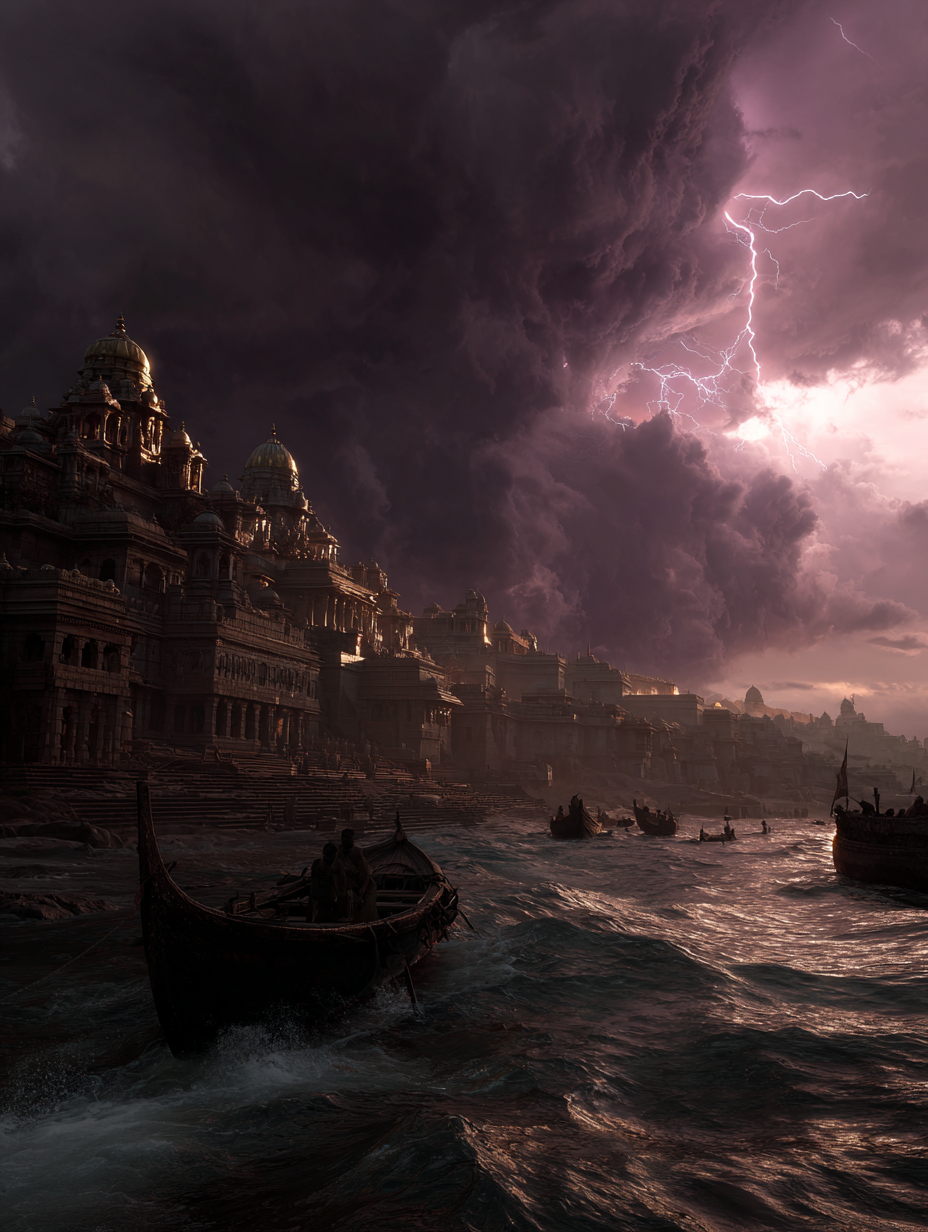
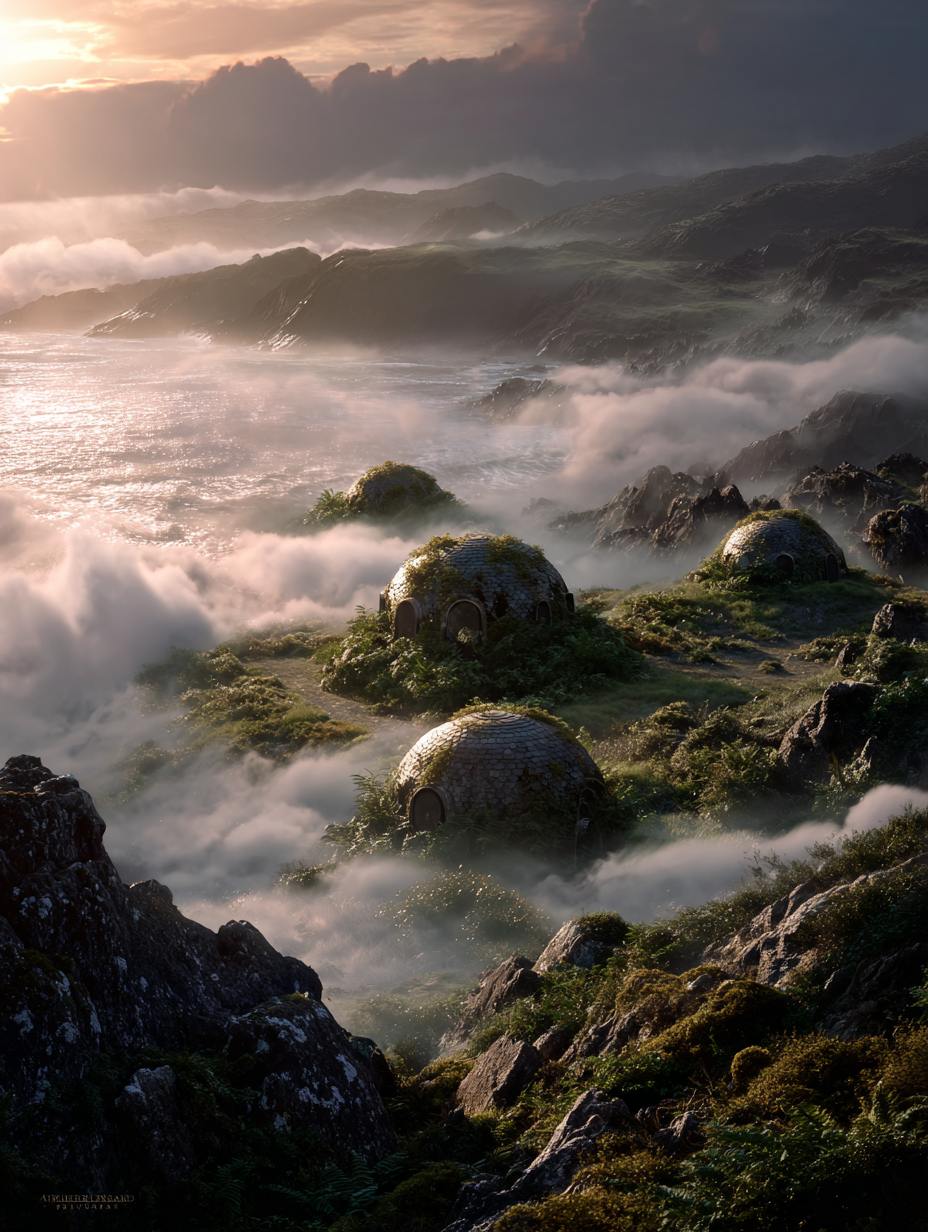
Hy-Brasil: The Vanishing Land
Mariners mentioned an island off the coast of Ireland called Hy-Brasil, which only showed up once every seven years. Sometimes seen on old maps, this phantom island was said to be home to a utopian society, with shimmering domes, radiant light, and an eternal spring.
The Mirage That Lured Explorers
Hy-Brasil became a siren song to explorers and treasure hunters. Expeditions set sail with hopes of finding this elusive land. Some claimed to have reached it, describing wise beings and cities of gold. Others returned empty-handed but haunted by dreams and visions.
The Irish linked Hy-Brasil to the Otherworld—a place between life and death, time and space. The name may stem from Breasal, a Celtic god, or the Old Irish word for “great beauty.”
Thule: The Edge of the Known World
The Greek explorer Pytheas wrote of a land called Thule, six days north of Britain, by ship, where the sun never set during the summer. Thule was the boundary of the known world—a realm of perpetual twilight, ice, and mystery.
The Cold Beyond Civilization
Some scholars equated Thule with Iceland or Norway. Others made it more symbolic: a metaphor for the outer limit of knowledge and experience. In Roman times, “Ultima Thule” became a poetic term for any unreachable place.
Over time, it was co-opted by mystics and even ideologues, from Nazi occultists to Norse revivalists. But the deeper meaning endures: Thule is the icy edge where the light of the known flickers against the dark.
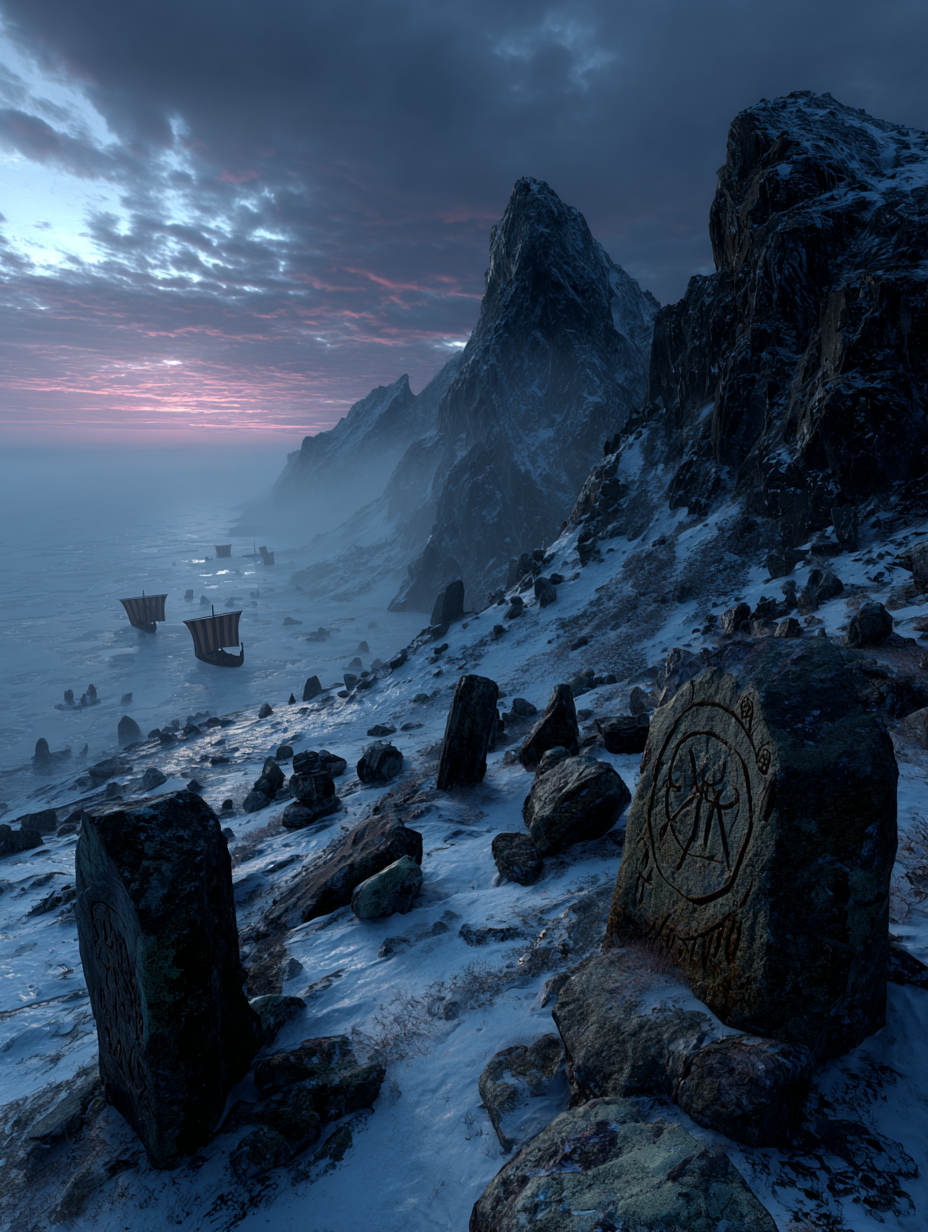
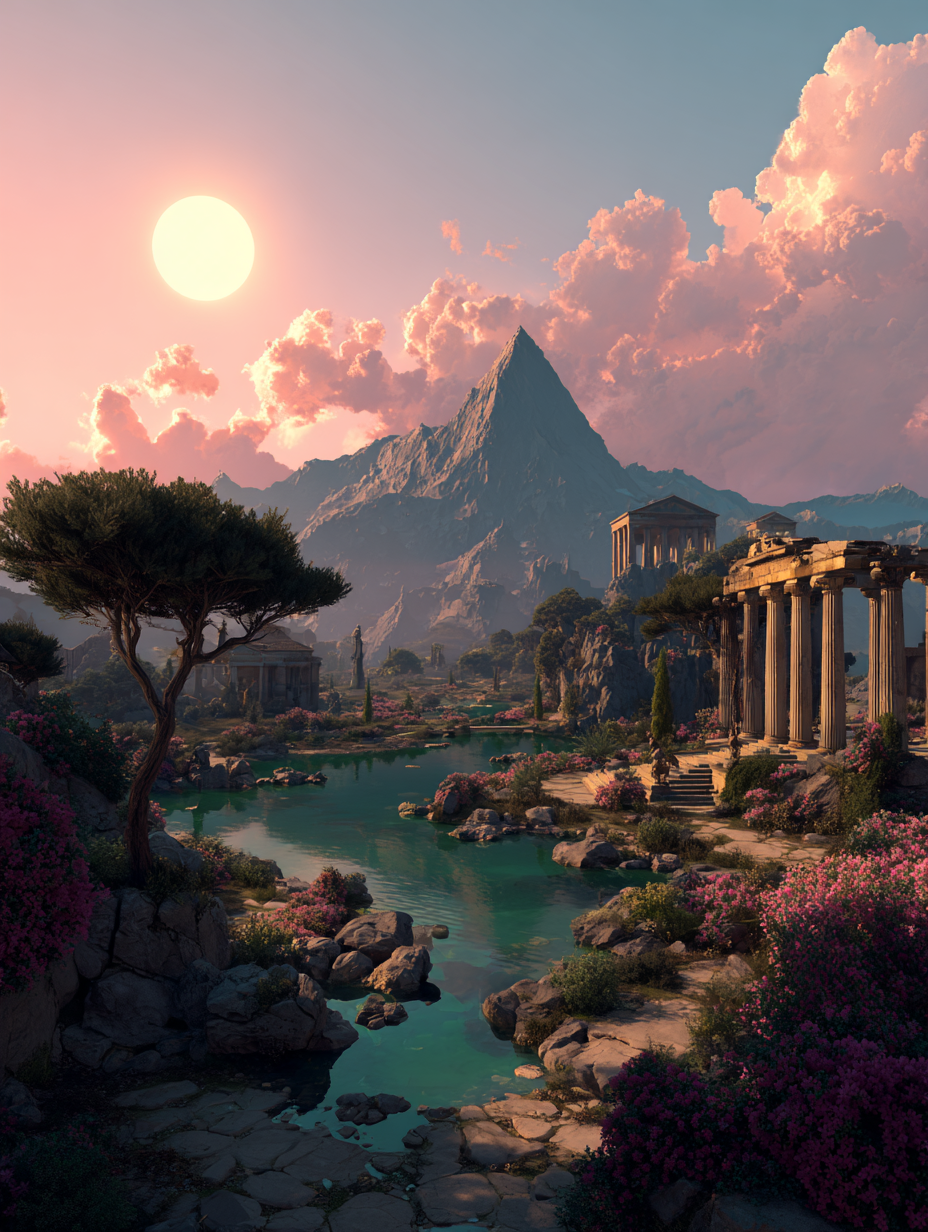
The Isles of the Blessed: Heroes’ Afterlife
In Greek mythology, the Isles of the Blessed—or Elysian Islands—were a paradise reserved for the souls of the righteous and heroic. Located far to the west, beyond Oceanus, this land basked in eternal spring. Here, spirits lived free of toil, enjoying music, feasting, and companionship forever.
Eternal Spring and Endless Feasts
Hesiod and Pindar wrote of this place as a reward for mortal virtue and valor. Over time, it merged with Elysium and even influenced early Christian and medieval ideas of Heaven.
But to the ancients, it wasn’t about morality alone—it was about glory, bravery, and nobility. The Isles was not a resting place but a continuation of the heroic life, without its sorrows.
Lemuria: The Submerged Continent of the East
Before plate tectonics became accepted science, 19th-century scholars invented Lemuria to explain the presence of lemur fossils in India and Madagascar. But Lemuria soon evolved from a hypothetical landmass into a spiritual legend.
The Mystical Homeland of Ancient Souls
Madame Blavatsky and other Theosophists claimed Lemuria was home to an advanced, spiritually enlightened race. Lemurians, according to esoteric lore, communicated telepathically and lived in harmony with nature. Their island-continent was said to have sunk in the Indian or Pacific Ocean after a great cataclysm.
Lemuria became a symbol in New Age beliefs—a lost Eden of spiritual wisdom we yearn to return to.
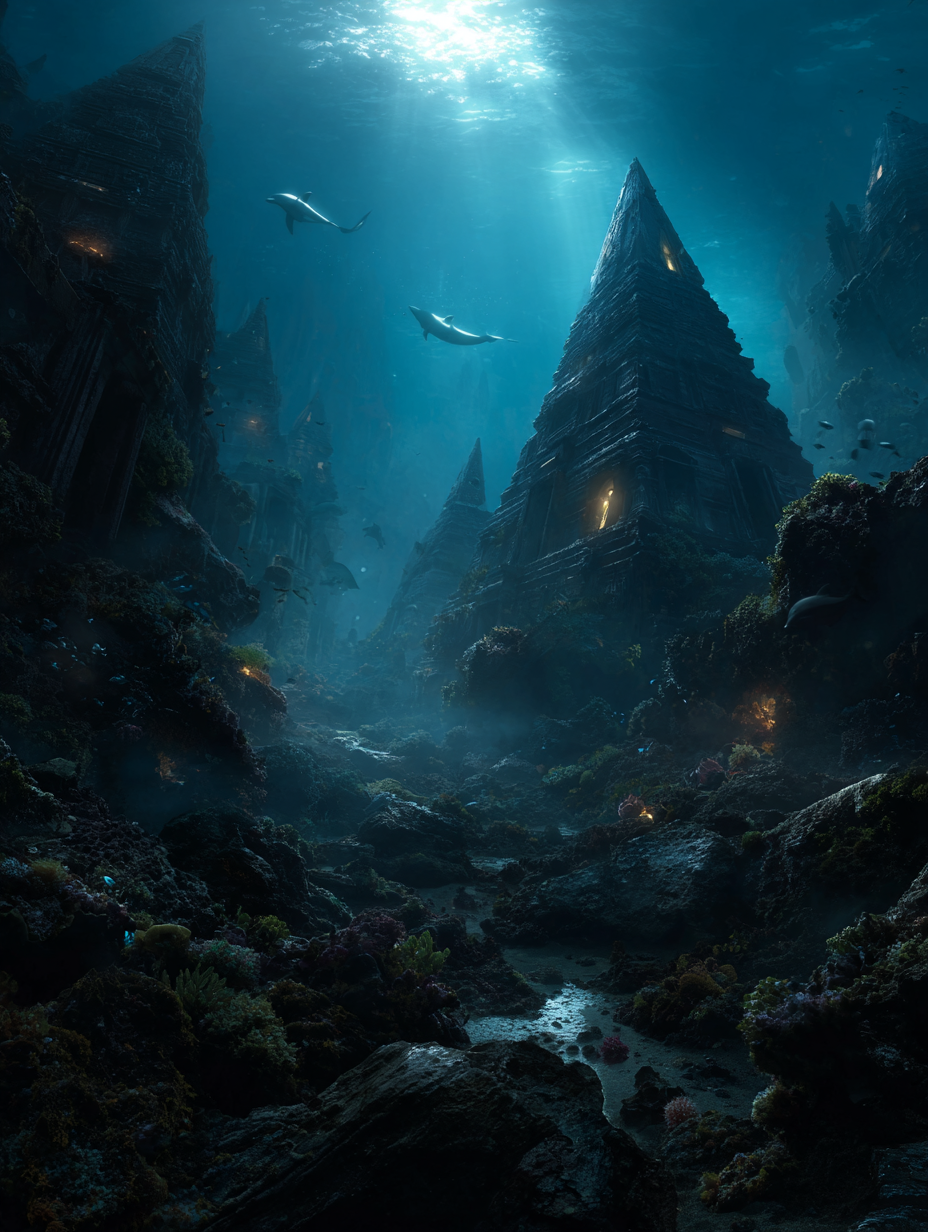
The Fortunate Isles: Legends Across Cultures
The term “Fortunate Isles” pops up in Greek, Roman, and even early Irish traditions. Whether it’s the Garden of the Hesperides, Avalon, or the Western Isles, there is a recurring archetype: paradise across the sea. These islands often lie westward—where the sun dies, and rebirth begins.
A Cross-Cultural Pattern
What links all these islands is a sense of liminality. They exist at the boundary between life and death, time and eternity, and reality and imagination. The ancients weren’t trying to chart these islands on a map—they were mapping the soul’s longings, its desires for meaning, wholeness, and transcendence.
Why We Still Dream of Islands
In every era, from Homer’s Greece to modern fantasy novels and video games, mythical islands fascinate us. They are places to escape, to find oneself, or to promise something beyond comprehension. Whether they exist physically, psychically, or symbolically, they reveal a truth about us: we are constantly searching for something just out of reach.
A mythical island is a mirror of human yearning. Perhaps we don’t need to find them in order to believe in them. Perhaps it is enough that they drift, eternally, at the horizon of myth and mind.
Citations & Sources
- Plato. Timaeus and Critias. Translated by Benjamin Jowett. (360 BCE)
- Geoffrey of Monmouth. Historia Regum Britanniae. c. 1136.
- Hesiod. Works and Days. 700 BCE.
- Pindar. Olympian Odes. 5th century BCE.
- Blavatsky, Helena. The Secret Doctrine. Theosophical Publishing, 1888.
- Wood, Michael. In Search of the Trojan War. BBC Books, 1985.
- Chet Van Duzer. Sea Monsters on Medieval and Renaissance Maps. British Library Publishing, 2013.
- MacKillop, James. Dictionary of Celtic Mythology. Oxford University Press, 2004.
- Barber, Richard. The Holy Grail: Imagination and Belief. Harvard University Press, 2004.

